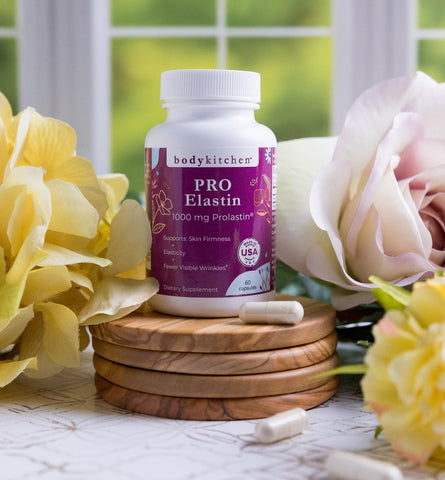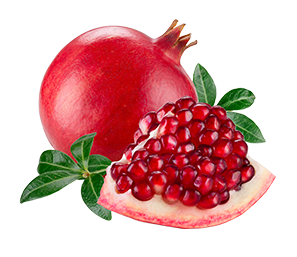The Age When You Should Start Taking Joint Health Seriously
You never forget the first time you hear your knees crackling and popping like a morning bowl of cereal. It’s an audible reminder that your body is undergoing age-related changes, and for many, the milestone arrives much sooner than expected.
You may feel young and at the top of your game. But by your 30s and 40s, your joints have already withstood decades of degradation from repetitive use.
The effects of cartilage wearing down are cumulative – you don’t know it’s happening until the day when you actually hear your knees grinding, or feel a bit stiff and achy.
According to the Cleveland Clinic, you can experience “wear and tear osteoarthritis”, the most common cause of joint discomfort, in your 30s just as easily as in your 60s.* In fact, cases of this age-related condition are on the rise globally among 30-44 year olds.*
How Joints Work
There are roughly 350 joints in your body, but not all of them rotate or bend.
Synovial joints are your ticket to mobility and freedom. There are six classes of synovial joints in the body that support a wide range of movements:
- Pivot joints – found in the neck, wrist and elbow
- Hinge joints – found in the elbow, knee and ankle
- Condyloid joints – found in the jaw, wrist, toes and fingers
- Plane joints – found in the wrist and feet
- Ball-and-socket joints – found in the shoulder and hips
- Saddle joints – found only in the thumb, ear and shoulder
Cartilage is the shock-absorbing pad of connective tissue at the end of bones that keeps them from grinding against each other. The matrix-like pads are filled with water to cushion your joints against impact. Cartilage is surrounded by membranes containing synovial fluid, a lubricating substance that delivers nutrients and removes waste.
When joints are in use, some of the fluid is squeezed out to coat the cartilage and prevent friction. When joints are at rest, the fluid is reabsorbed into the cartilage.
What Happens as Joints Age
As with many substances in the body, production of synovial fluid slows down and struggles to meet the demands of your active body as you age. With less fluid content, cartilage loses plumpness and flexibility, and becomes stiffer and thinner.
Simultaneously, bones, muscles, tendons and ligaments that support joints deteriorate as production of the collagen they depend on also decreases, creating the perfect breeding ground for age-related aches and pains.
You’re Never Too Young for Joint Care
Mobility issues can cripple your sense of freedom and independence at a time when you need it most. And nobody wants to be sidelined by a body that can’t keep up.
Whether you’re in your 40s, 30s or even your 20s, you’re never too young to start getting ahead of joint aging by protecting your precious cartilage and surrounding tissues. And if you’re in your 50s… it’s time to catch up.
Women should especially take precautions. Research shows that knee joints in women become more lax during the menstrual cycle when estrogen levels rise.* Cartilage is dependent on estrogen to help fight inflammation.* So during menopause when estrogen levels decline, cartilage has significantly less support.
How to Improve Joint Health
The first thing you should do to support healthy joints is… don’t wait! Every day that you skimp on the essentials you need to maintain flexibility is a day that makes your future health bleaker.
The good news is that promoting mobility now and later really is quite simple. Here are a few rules of thumb:
- Stay Hydrated – Fluids beget fluids. Up to 80% of cartilage is water. So if you get dehydrated, so will your cartilage. Water also helps to flush out toxins from your body, which supports a healthy inflammatory response in your joints and throughout your body. Aim for about 11-12 cups of pure, sugar-free, caffeine-free liquids daily.
- Keep Moving – Regular movement is essential for maintaining healthy joints, because the more active you are, the more lubricating fluid coats the pads of cartilage. Exercise also helps you maintain a healthy weight to ease the strain on your joints. Brisk walks, swimming, biking and light weight-bearing exercise are excellent low-impact activities that take it easy on your joints.
- Stretch to Strengthen – As part of your exercise routine, include activities that increase range of motion. Yoga, pilates, tai chi – any activity that includes stretching helps to strengthen smaller muscle groups and connective tissues that support your range of motion, as well as balance.
- Eat to Flex – The best foods for joint health are those that are brimming with antioxidants that neutralize oxidative stress and inflammation. Aging joints are like rusty hinges. A variety of antioxidants from bright and colorful fruits, vegetables, spices and fish are your best bets. (Our yummy Dairy-free Coconut Fudge Pops recipe is boosted with collagen to support joint renewal!)
- Supplement with Supplements – For concentrated doses of joint-boosting compounds, add a high-quality joint health supplement to your daily routine. There are many ingredients available, from compounds that mimic natural substances found in joint tissue to plant extracts and oils.
For a cutting-edge nutritional approach, try Pro-Mobility, our popular joint support formula from New Zealand. It features premier green-lipped mussels in an extract form that preserves natural bio-activity of compounds, including omega-3s, GAGs, proteins and minerals. This profile helps to renew and strengthen cartilage and joint tissues.
Formulated to provide comprehensive nutritional joint care, Pro-Mobility includes two additional patented extracts shown to support flexibility and minimize joint discomfort. Our formula delivers clinically studied doses of all three joint health powerhouses.
You don’t have to accept creaks, aches and pains as an inevitable part of aging. With some daily joint TLC, you can support your mobility for years to come.

















